Last Updated on May 17, 2024 by Ecologica Life
Summer brings sunshine, barbecues and, unfortunately, wasps. But before you swat them, consider this: wasps may be some of nature’s unsung heroes.
If we got rid of wasps, would the world notice? Do wasps do anything for the environment? Scientists say yes, and it turns out wasps are more interesting than most of us think.
Read on to find out more about the interesting and complex lives of wasps, and why wasps are useful.
Table of Contents
Introduction
It’s summer, you’re at a barbecue or in the park, when suddenly you hear a loud buzzing noise. It’s a wasp that won’t leave you or your food/picnic alone, now there are a few of them. Great, annoying little buggers.
They’re not just annoying though, if you’re lucky enough they might even sting you, generally not a pleasant experience. The pain, the buzzing and the attacks on our food make wasps, unsurprisingly, one of people’s least favourite animals.
Bees, on the other hand, have a pretty good reputation. People care about bees. So much so that there are movements worldwide to protect the bee populations. U.S. honey beekeepers reported that they had stabilised the honeybee population in 2023.
Bumblebees Fail Colour Vision Test Due to Common Pesticide.
Despite the nuisance, wasps lead fascinating lives and are also very important to the environment. Wasps are facing similar problems to bees, and so it is important that we take a moment to understand them a litter better before so ignorantly dismissing them as summer pests.
We would certainly not be better off without them.
What Do Wasps Do?
The colony-living, nest-building species represent only a small fraction of the total wasp diversity. In the UK alone there are more than 9,000 wasp species. Most wasps are not social wasps, they are solitary creatures (also called hunting wasps). Some of them are so tiny they are almost microscopic. It is unlikely you will encounter solitary wasps and they are largely overlooked. Solitary wasps can be black and yellow, but also black and orange, iridescent (shiny) black or purple.
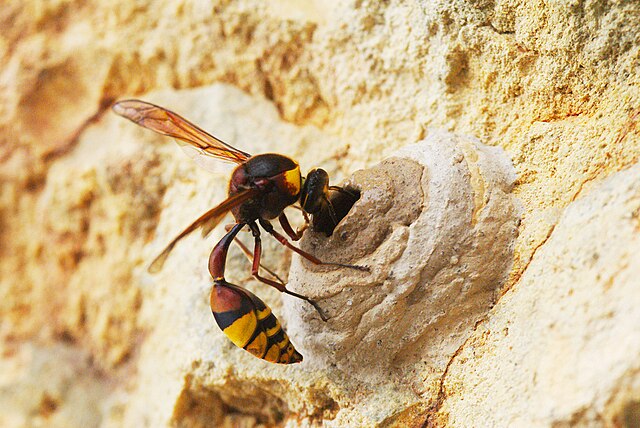
The insects that we all call “wasps” are actually a subgroup of wasps known as social wasps (or yellowjackets). These social wasps form colonies consisting of hundreds of thousands of mostly sterile female workers (with a few fertile males) and their much larger mother, the egg-laying queen.
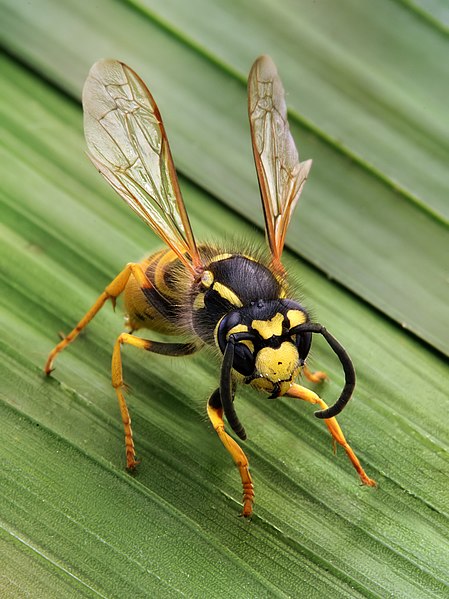
The queen releases a pheromone that blocks the reproductive development of the workers. When the queen dies, the workers begin to develop ovaries within a couple of weeks and can eventually lay eggs. However, the wasps that hatch from these eggs are always male. This is nature’s way of ensuring that even if the queen dies early, her DNA can be passed on.
Social wasp nests are made from wood fibres collected and mixed with water by diligent worker wasps. This creates a kind of papier-maché that forms strong and durable structures. Nest building begins in late spring when the queen emerges from hibernation. The queen starts by constructing a small nest with a few paper cells. She has to make the first set of workers alone. Once these initial workers mature, they take over the various tasks required to support the growing colony.

Worker wasps tirelessly care for their sisters, performing duties such as nest building, defence, food gathering, and tending to the queen. Amazingly, the colony is able to organise itself efficiently so that each worker knows where to be.
As the colony grows, workers feed certain young larvae at a much higher rate, triggering genetic changes that develop potential queens (gynes) instead of workers. An average wasp nest produces between 1000 and 2000 queens a season. After mating with males from other colonies, gynes can remain in the nest over the winter, starting a new colony the following spring.
Male wasps (drones), which do not take part in colony activities, develop from unfertilised eggs through a process called haplodiploidy, which is also found in bees and ants. Drones remain in the nest until the queens force them out. From then on, they stay away from the nest. They just feed and bide their time until they can find a gyne to mate with.
Think what you will, but the social life of these wasps isn’t dull. Wasps, however, don’t produce honey. So what are wasps good for? What is the function of wasps?
The Role of Wasps in the Environment
What is the purpose of wasps? Are wasps pollinators? What are wasps good for in the environment? Well, wasps have two key roles in the environment: Pest control and pollination.
Firstly, wasps play an important ecological role by controlling the numbers of pests such as green flies and caterpillars. It has been estimated that social wasps in the UK alone are responsible for 14 million kilograms of insect prey over the summer.1 To put that into perspective, that’s roughly the weight of 112 double-decker buses! Imagine a world with many more pests on our crops and gardens without these industrious hunters.
As well as being fierce predators, wasps are increasingly being recognised as valuable pollinators, transferring pollen when they visit flowers to drink nectar. Their attraction to sweet liquids explains why they become particularly bothersome at the end of the summer.
By late August, wasp nests are full of workers, but they stop rearing larvae. When nests have larvae, the workers need to collect protein. So they hunt invertebrates in our gardens. Once fed, the larvae convert this protein-rich food into carbohydrates, which they secrete in sugary droplets that feed the worker wasps.
Once the larvae are gone, the adult wasps have to find alternative sources of sugar. Normally they look for nectar, but of course they are naturally attracted to our sugary foods and drinks. This makes chance encounters with them particularly high at the end of summer, when we are eating outdoors and enjoying the weather.
Researchers at UCL and the University of East Anglia recently found evidence of wasps visiting 960 plant species.2 These included 164 species that are completely dependent on wasps for pollination. Some orchids even mimic the appearance of female wasps to attract wasps for pollination. The researchers suggest that since many wasps visit a diverse range of plants, they could act as back-up pollinators for plants that have lost their primary local pollinators.
It is worth mentioning here that the Agaonidae, commonly known as fig wasps, are the only pollinators for nearly 1000 species of fig. This makes them essential to the survival of these plants. In turn, fig wasps entirely dependent on fig trees for their own survival. This creates a fully mutualistic relationship where both species benefit from their close co-evolution.
As an additional minor role, wasps are also prey for a few species in particular. While most species will stay away from wasps because of their sting, bee-eaters (in the bird family Meropidae) specialise in eating stinging insects. They remove the venom from the stinger by repeatedly brushing the prey against a hard object, such as a twig. Other predators include the honey buzzard and the roadrunner.
In Medicine
Beyond their ecological roles, wasps have medical potential. The venom of both solitary and social wasps contains antibiotics that preserve their prey by keeping it free of disease. In addition, the larvae of social wasps produce secretions rich in antimicrobials that the worker wasps apply across their bodies, offspring, and nests.
These antimicrobials show promise in combating human pathogens. One pathogen of particular note is Mycobaterium abscessus, an increasingly important human pathogen due to its resistance to several antimicrobial drugs. A first of its kind study in 2016 showed that a peptide known as polydim-I from wasp venom induces bacterial cell wall disruption without having any toxic effects on mammalian cells.3 The researchers also treated mice infected with this bacterium and induced a 0.8 to 1 log reduction in bacterial load in the lungs, spleen, and liver.
Even the nests of social wasps, such as those of the Polistes species, have been found to possess antibiotic properties, effective against bacteria such as Stretococcus mutans, which is associated with tooth decay, as well as Actinomyces and Lactobacillus.4 Interestingly, these nests (Nidus Vespae) are considered a form of traditional Chinese medicine for toothache by tooth brushing.5 It is also used to treat a variety of diseases, including cardiovascular disease, digestive, and urinary disorders.
In an exciting 2020 study, a peptide derived from wasp venom was converted into a potent antimicrobial capable of resolving otherwise lethal infections in mice.6 The peptide targeted the bacterial membrane while also modulating the host immune response and dampening unwanted inflammation. Venom-derived molecules could be an exciting new source of much-needed antibiotics.
Finally, one of the most intriguing medical prospects is the use of mastoparan, a compound found in the venom of social wasps.7 This family of peptides selectively targets cancer cells over healthy ones. However, its practical application in cancer treatment is still in the early stages of research.
Nature is clever, and we should look more to her for answers. Some of our best medicines to date have come from nature.
Summary
Wasps lead complex and interesting lives. Most of them are solitary creatures, the few that interact with us tend to be the social types. Wasps play a key ecological role in predation and pollination in the environment. When they are unable to obtain sugar from their larvae, they forage for nectar and sugary foods. This explains why encounters with wasps increase at the end of the summer. Finally, the study of our little buzzing (slightly aggressive) friends has revealed that their venom and even their nests could have medical applications.
Understanding wasps is one step closer to appreciating their importance. You may still not like them, and that’s fine, but hopefully, the next time you see a yellow jacket, you’ll think of them as something more than just a pest.
Let us know if we’ve managed to change your view about wasps in the comments! And don’t forget to share this article with your wasp-hating friends.
References
- What’s really the point of wasps? – BBC.
- Brock, R.E., Cini, A. and Sumner, S. (2021), Ecosystem services provided by aculeate wasps. Biol Rev, 96: 1645-1675. https://doi.org/10.1111/brv.12719.
- Das Neves RC, Trentini MM, de Castro e Silva J, Simon KS, Bocca AL, Silva LP, et al. (2016) Antimycobacterial Activity of a New Peptide Polydim-I Isolated from Neotropical Social Wasp Polybia dimorpha. PLoS ONE 11(3): e0149729. https://doi.org/10.1371/journal.pone.0149729.
- Xiaoxu Guan, Yi Zhou, Xue Liang, Jin Xiao, Libang He, Jiyao Li, Effects of compounds found in Nidus Vespae on the growth and cariogenic virulence factors of Streptococcus mutans, Microbiological Research, Volume 167, Issue 2, 2012, Pages 61-68, ISSN 0944-5013, https://doi.org/10.1016/j.micres.2011.03.002.
- Jin Xiao, Yuan Liu, Yu Ling Zuo, Ji Yao Li, Ling Ye, Xue Dong Zhou, Effects of Nidus Vespae extract and chemical fractions on the growth and acidogenicity of oral microorganisms, Archives of Oral Biology, Volume 51, Issue 9, 2006, Pages 804-813, ISSN 0003-9969, https://doi.org/10.1016/j.archoralbio.2006.03.014.
- Silva, O.N. et al. (2020) ‘Repurposing a peptide toxin from Wasp Venom into antiinfectives with dual antimicrobial and immunomodulatory properties’, Proceedings of the National Academy of Sciences, 117(43), pp. 26936–26945. doi:10.1073/pnas.2012379117.
- Natália Bueno Leite, Anders Aufderhorst-Roberts, Mario Sergio Palma, Simon D. Connell, João Ruggiero Neto, Paul A. Beales, PE and PS Lipids Synergistically Enhance Membrane Poration by a Peptide with Anticancer Properties, Biophysical Journal, Volume 109, Issue 5, 2015, Pages 936-947, ISSN 0006-3495, https://doi.org/10.1016/j.bpj.2015.07.033.
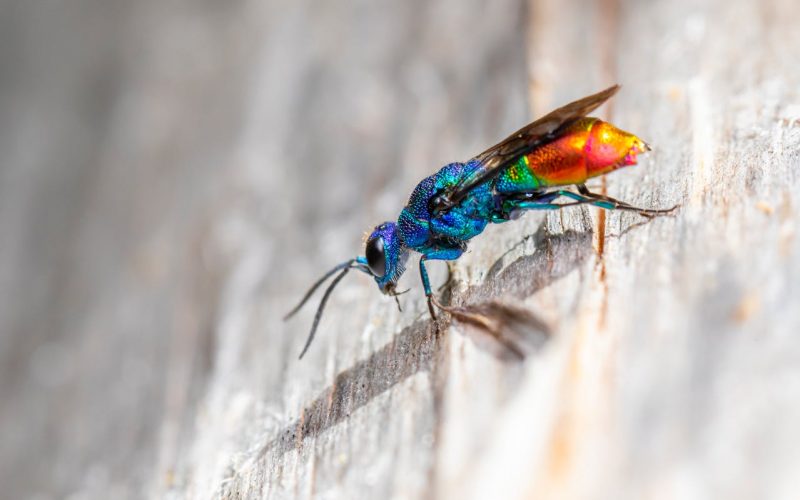


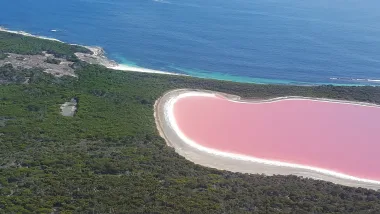


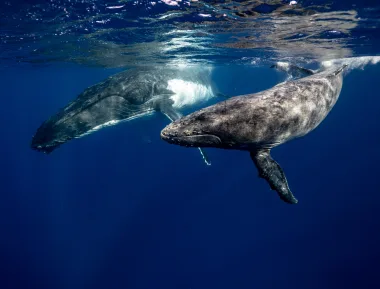
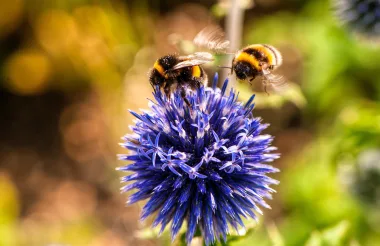

1 comment
Bijzonder interessant, blikverruimend. Dankjewel hiervoor.